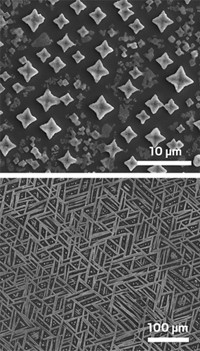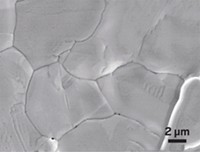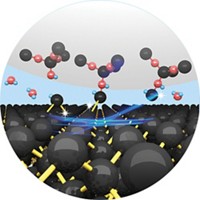Advertisement
Grab your lab coat. Let's get started
Welcome!
Welcome!
Create an account below to get 6 C&EN articles per month, receive newsletters and more - all free.
It seems this is your first time logging in online. Please enter the following information to continue.
As an ACS member you automatically get access to this site. All we need is few more details to create your reading experience.
Not you? Sign in with a different account.
Not you? Sign in with a different account.
ERROR 1
ERROR 1
ERROR 2
ERROR 2
ERROR 2
ERROR 2
ERROR 2
Password and Confirm password must match.
If you have an ACS member number, please enter it here so we can link this account to your membership. (optional)
ERROR 2
ACS values your privacy. By submitting your information, you are gaining access to C&EN and subscribing to our weekly newsletter. We use the information you provide to make your reading experience better, and we will never sell your data to third party members.
Materials
Surface Film Controls Gas Flow
Reversible adjustment depends on temperature-induced, melting-like transition
by Mitch Jacoby
November 4, 2013
| A version of this story appeared in
Volume 91, Issue 44
The push to make lab-on-chip devices, all-in-one microfluidic tools for chemical and clinical analysis, is driven by their projected low cost and portability, as well as by the tiny sample size and short analysis time required to obtain results. Such tools could be used to quickly measure analytes in, for example, hospital, battlefield, and home settings. One challenge impeding faster development is having a means to precisely control gas flow through the devices. Chemical engineers at Virginia Tech may have come up with a simple solution that does not involve moving parts. Dongjin Seo and William A. Ducker report that gas flow rates can be reversibly adjusted by using heat to alter the roughness of an organic film lining the inside of a micrometer-diameter glass tube (Phys. Rev. Lett. 2013, DOI: 10.1103/physrevlett.111.174502). On the basis of atomic force microscopy and other analyses, the team showed that heating and cooling a monolayer of octadecyltrichlorosilane causes the material to undergo a conformational transition. The film’s roughness at 18 °C, which impedes the flow of nitrogen at 1 atm, can be smoothed by warming to 40 °C, causing flow rates to double.





Join the conversation
Contact the reporter
Submit a Letter to the Editor for publication
Engage with us on Twitter